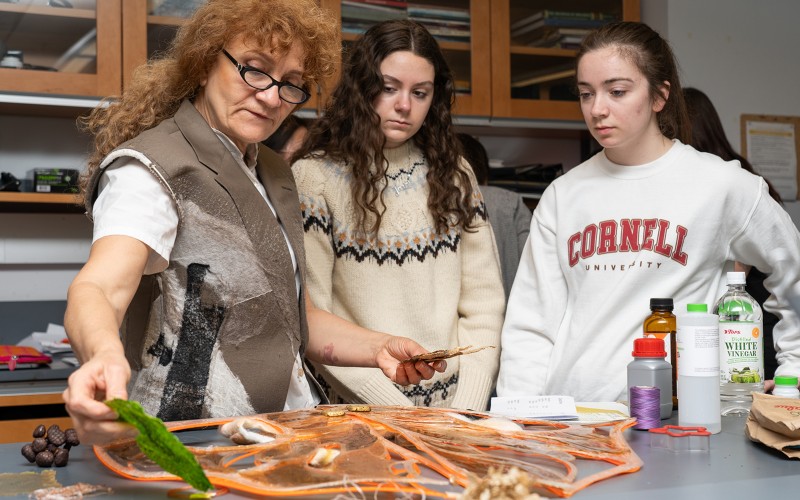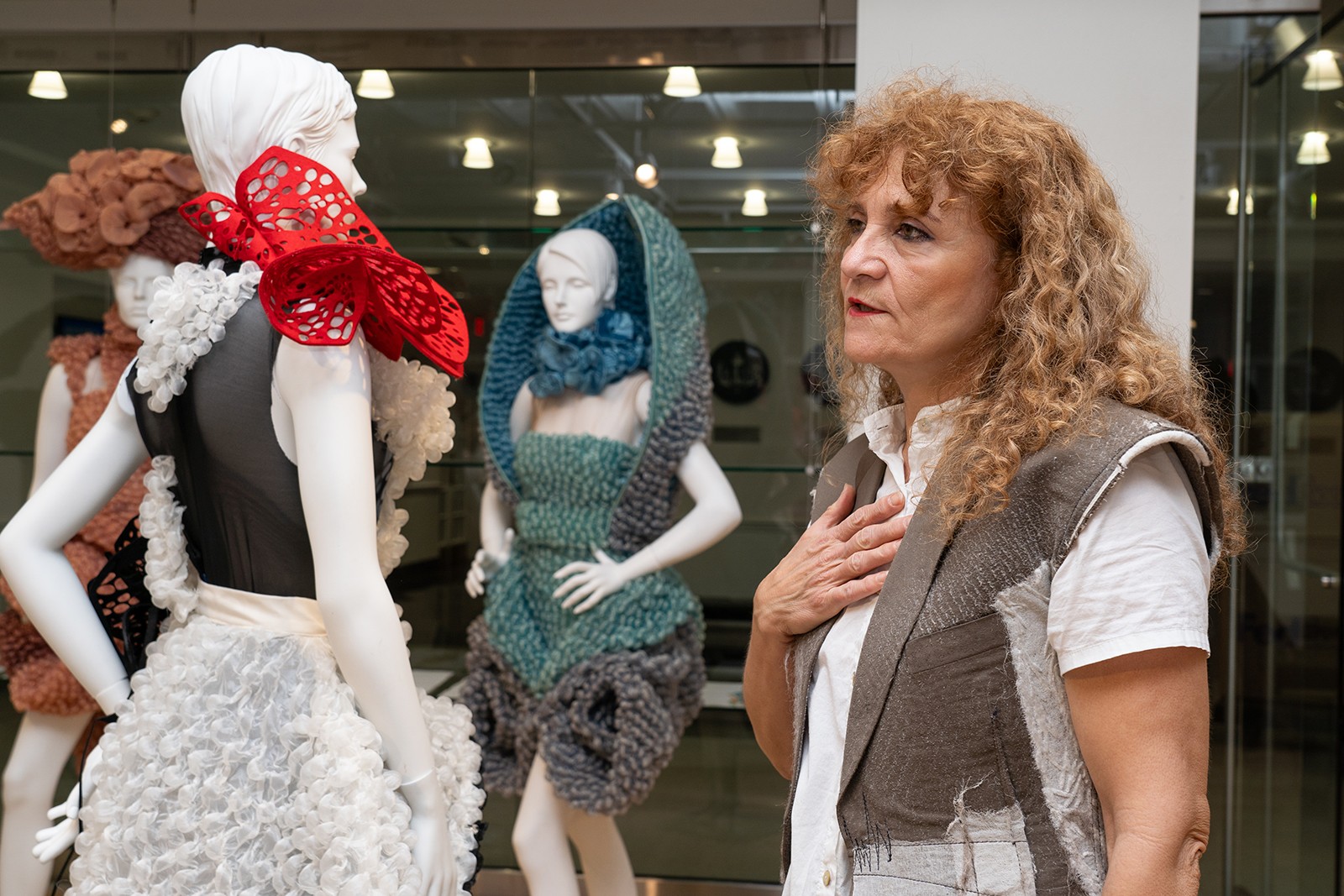
In March, the Department of Human Centered Design (HCD) welcomed internationally acclaimed designer Galina Mihaleva as the 2023-2024 designer in residence. Mihaleva, an artist, fashion and wearable technology designer and educator, is an associate professor at ASU FIDM, part of Arizona State University’s Herberger Institute for Design and the Arts. Her artistic practice and research highlight the dialogue between body and dress, driven by the idea of having both a physical and a psychological relationship with a garment as responsive clothing or wearable technology.
“I met Prof. Mihaleva in 2023 while I was on sabbatical at ASU and was immediately impressed with her design work and teaching approach,” said Margaret Frey, the Vincent V.C. Woo Professor in HCD. “As I got to know her and her work, I realized the huge international impact of her design work and collaborations and how extensively her work overlaps with HCD.”
HCD faculty bring together a variety of disciplines to pursue research interests in areas like apparel design, design innovation, fiber science, health and wellbeing and sustainability, all with the shared goal of improving lives. Similarly, Mihaleva integrates technology, media art, textile design, live performance, materials science and the humanities and combines traditional techniques with innovative materials and technologies to create her apparel.
“The message behind my work is to always be responsible – responsible fashion designers, responsible citizens of the earth, thinking about the materiality that we use and where they will go in the end,” Mihaleva said.
The Designer in Residence program is the vision of Lori Oscher Friedman ’91, whose own student experience was impacted by a visit from designer Susan McFadden. The designer works individually with students, offers workshops and curates an exhibit, building relationships with faculty and students and becoming part of the Human Ecology community.
“In addition to her gallery exhibit and her distinguished lecture, Mihaleva participated in five design studio courses as well as the engineering textiles course and the Fiber Science and Apparel Design Futures course,” Frey said.
Mihaleva saw the progression of students working with textiles and engineering techniques. Her insights added to implementing the methods these students utilize in making and executing sustainable clothing within their classes. Her lecture focused on the broad sense of her research in wearable technology, wearable technology in performance art, sustainability and new materials for a better future.
She also prepared two workshops where HCD students could acquire additional expertise and knowledge from hands-on and experimental work. One of her workshops centered on thermoplastics and surface manipulation of polyester fabrics, illustrating how plastics are easily reshaped if heated to a temperature at which the plastic becomes liquid. The other focused on bioplastics – plastic materials made from renewable biomass. Participants made three types of bioplastic materials in film and fiber forms.

Mihaleva with her designs
The residency program highlighted Mihaleva’s research, which urges and focuses on the possibility of combining artistry with the human mind and body to create a seamless transition.
“I want individuals to embody the clothing they wear,” she said while giving an in-depth tour of her work. The exhibit included a video detailing how once the individual fit into the design, they immediately encapsulated her vision. “It’s beautiful how each person has their own personality,” she said. “They symbolized the meanings that originated in the creative process.”
She explained her process of fabricating the dresses she narrates the exciting process it takes to fabricate her dresses. One big part of her process is to use a widely available resource: rubber bands. She manipulates the rubber bands to foster unique shapes that bulge out of the design. An eccentric but sustainable technique is when she takes used clothing from thrift shops or recycled polyester, hand-maneuvers it, and imparts a story within, where individuals value and embody them. Inspirations have come from pop sensation Prince, dying coral reefs, and light pollution. Her art is shown through all design aspects: the color, shape, and process that took weeks to invent and execute.
Mihaleva’s newest experiments will focus on building a space where integrating the human body with wearable technology is essential. She explained that she is exploring how sustainable fashion relates to the relationships between social behaviors and the impact of social media on personal identity issues.
The students’ contributions to Mihaleva’s workshops and lectures created an inclusive and enlightened environment, while analysis and observations of her research and methods highlighted the impact CHE and HCD students will hopefully implement in their future careers.
“My experience here at Human Ecology, working with students and professors and administrators, was incredible,” she said.